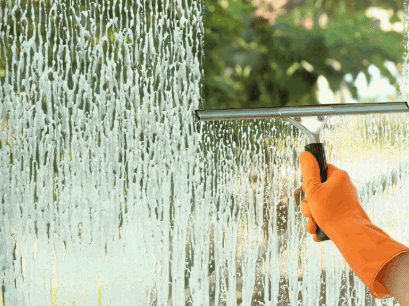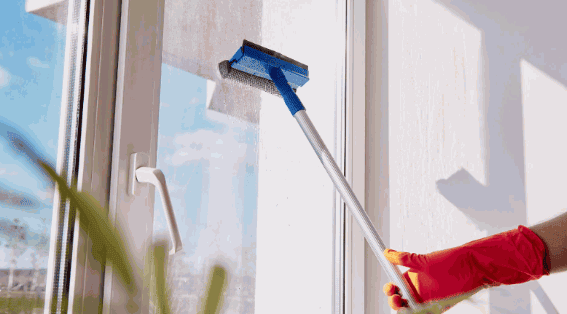
Cleaning windows goes beyond mere aesthetics; it enhances your home's appearance and prolongs the life of your window frames.
Whether you're looking to banish streaks or maintain clarity, understanding the right tools and techniques is essential.
This guide covers the importance of window cleaning, the best tools to use, and step-by-step instructions for various window types, ensuring you avoid common cleaning mistakes.
Find window cleaning tips for maintaining that sparkling finish, ensuring your windows stay pristine all year round.
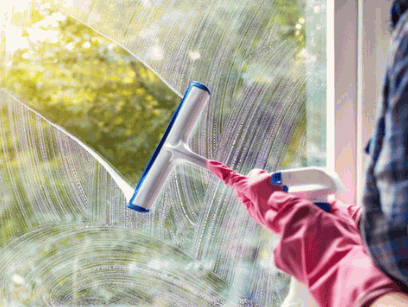
Why Is It Important To Clean Window Glass?
Table of Contents
Cleaning window glass is essential not only for aesthetic reasons but also for improving natural light, enhancing your home's ambience, and extending the lifespan of your windows. Dirty windows can accumulate grime, dust, and fingerprints, which can obstruct your view and negatively impact the overall appearance of your home.
Regular cleaning helps maintain window integrity, prevents deterioration, and ensures proper functionality of window treatments. Furthermore, using effective cleaners like distilled vinegar or a baking soda mixture can promote safe cleaning practices, making it a crucial part of home cleaning routines.
Learn more: How To Clean Window Blinds
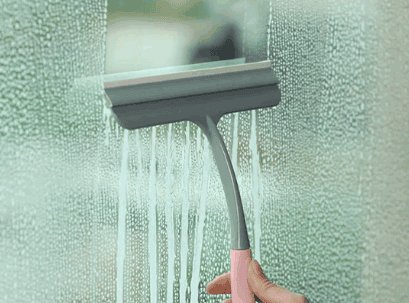
What Tools Do You Need For Cleaning Window Glass?
To effectively clean window glass, having the right tools is crucial. Essential tools include a reliable glass cleaner, which can be a commercial product or a homemade solution using distilled vinegar, baking soda, or lemon juice, and cleaning equipment like a squeegee for a streak-free finish.
Additionally, a microfibre cloth is essential for dust removal and polishing glass surfaces without leaving fluff behind, perfect for achieving window shine.
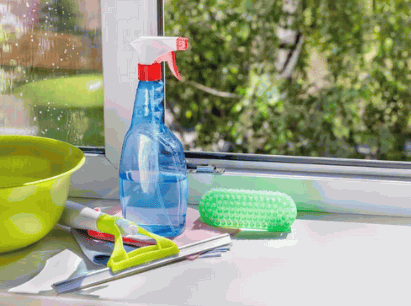
What Are The Different Types Of Window Glass Cleaners?
Regarding cleaning window glass, several types of cleaners are available, each with its unique benefits. Commercial glass cleaners are widely used for their convenience, but many homeowners opt for natural alternatives like vinegar cleaner or rubbing alcohol to achieve a streak-free finish while ensuring safe cleaning practices. These DIY cleaners, made from household items, are not only cost-effective but also environmentally friendly, providing effective cleaning solutions without harsh chemicals, such as Invisible Glass Cleaner or E-Cloth Window Cleaning Kit.
In comparing the two approaches, it's essential to consider factors such as effectiveness and safety.
While commercial products often contain powerful solvents and fragrances that can swiftly tackle tough grime, they may irritate sensitive skin or respiratory systems. On the other hand, homemade cleaners typically utilise ingredients like vinegar, bicarbonate of soda, and water, which are generally safe and non-toxic.
- Pros of Commercial Cleaners:
- Quick and efficient
- Readily available
- Designed specifically for tough stains
- Cons of Commercial Cleaners:
- Contains harsh chemicals
- Can cause allergies or irritations
- More expensive long-term
- Pros of Homemade Cleaners:
- Eco-friendly
- Inexpensive and effective
- Customise your fragrance
- Cons of Homemade Cleaners:
- It may require more elbow grease
- Not always effective on heavily soiled surfaces
Ultimately, the choice between commercial and homemade cleaners depends on individual preferences, cleaning needs, and whether a cleaning expert's advice is followed.
What Are The Essential Cleaning Tools?
Essential cleaning tools for window maintenance include a high-quality squeegee, which is crucial for achieving a streak-free finish, and microfibre cloths that effectively remove dust and fingerprints from glass surfaces. Having a variety of cleaning supplies on hand, such as vinegar solution or baking soda paste, gives you the power to you to tackle different cleaning tasks efficiently.
To ensure a comprehensive approach, consider these additional essential tools:
- Bucket: Essential for holding cleaning solutions, a sturdy bucket aids in mixing and transporting your cleaning supplies, preventing spills.
- Scrubber: A soft-bristle scrubber helps to loosen dirt and grime before the squeegee takes over, ensuring a more thorough clean.
- Extendable Pole: For hard-to-reach windows, an extendable pole with an attachment can save considerable time and effort.
- Window Cleaning Solution: A dedicated solution, either commercial or homemade, ensures the best results as it cuts through grease without leaving residue.
Incorporating these tools into your routine not only promotes a polished appearance but also enhances the lifespan of the glass, making each cleaning session more effective. By utilising these essential tools, the quest for spotless windows becomes a manageable task that aligns with advice from the Good Housekeeping Institute.
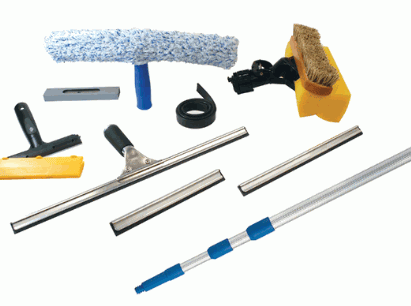
How To Prepare For Cleaning Window Glass?
Preparing to clean window glass involves a systematic approach to ensure efficiency and optimal results. Start by gathering all necessary cleaning supplies and tools, including a squeegee, microfibre cloths, and your chosen cleaning solution, whether it is a vinegar mixture, soapy solution, or commercial glass cleaner.
Additionally, remove any items obstructing access to the windows, such as window screens or furniture, to facilitate a thorough cleaning process that adheres to safe cleaning practices.
What Are The Safety Measures To Take?
Safety measures are crucial when cleaning window glass to prevent accidents and ensure effective cleaning. Always ensure that you have a firm footing, use a stable ladder or platform if cleaning high windows, and avoid using harsh chemicals that could harm your health or the environment. Opt for a vinegar cleaner or other safe cleaning solutions made from household items like cornstarch, and wear gloves if necessary to protect your skin.
Plus a sturdy ladder, consider using a spotter to hold the base or to provide additional support, which can significantly enhance window cleaning safety. Always check the ladder's condition before use, ensuring that it is free from any defects.
Regarding chemical handling, prioritize those that are eco-friendly and non-toxic; this not only protects your wellbeing but also maintains a safer environment for all.
- Wear protective eyewear when spraying any cleaning solution.
- Ensure adequate ventilation if using any chemical products.
- Store all cleaning supplies safely, out of reach of children and pets.
Physical safety is just as paramount; remember to lift heavy cleaning tools with your legs and not your back. By following these basic precautions and adopting safer cleaning solutions, window maintenance can become a much more enjoyable and hazard-free task.
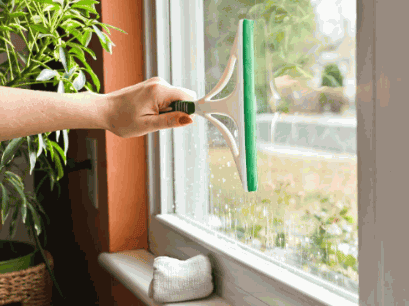
What Is The Best Time To Clean Window Glass?
Utilising advice from experts can enhance your cleaning strategy.
The best time to clean window glass is typically on a cloudy day, as this prevents direct sunlight from causing streaks and allows for better visibility of smudges and dirt. Early morning or late afternoon can also be ideal, as temperatures are cooler, reducing the chances of cleaning solutions drying too quickly during the cleaning process. This timing aligns with the effective cleaning methods recommended by cleaning experts.
Opting for these specific conditions can significantly improve the overall outcome of the task. When window cleaning occurs on a cloudy day, the absence of harsh sunlight makes smudges and other imperfections more easily noticeable, thereby enabling a thorough and effective cleaning. During early morning hours or late afternoons, the mild temperatures not only enhance the performance of cleaning products but also safeguard the surfaces from extreme temperature fluctuations that could affect the integrity of the glass.
- Humidity levels also play a crucial role; moderate humidity can help maintain wetness, ensuring that the cleaning solution works its magic.
- Avoiding windy conditions prevents dust and debris from settling on freshly cleaned windows.
By strategically timing the cleaning process, one can ensure that every window shines beautifully, providing a clearer view and enhancing kerb appeal.
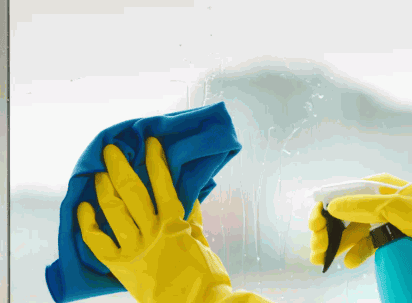
How To Clean Window Glass Step-by-Step?
Cleaning window glass step-by-step ensures thoroughness and a streak-free finish, making the process efficient and effective.
- Start by removing any dirt or debris from the window panes using a dry microfibre cloth.
- Prepare a cleaning solution, which could be a vinegar mixture or a soapy solution.
- Apply the cleaner to the glass.
- Scrub gently with a sponge or cloth.
- Rinse thoroughly with clean water.
- Finish by drying the glass with a squeegee or soft cloth.
Step 1: Remove Any Dirt Or Debris From The Window
The first step in cleaning window glass is to remove any dirt or debris accumulated on the window panes. Using a dry microfibre cloth or a soft brush, gently wipe away loose dust, cobwebs, and other debris to prepare the surface for cleaning.
Not only does this preliminary action ensure a clearer view, but it also plays a crucial role in preventing scratches during the actual cleaning process. Neglecting to remove this surface debris may lead to unwanted scratches, compromising the integrity of the glass.
For effective dirt removal, it is recommended to:
- Start from the top of the window and work your way down.
- Use a soft brush to dislodge stubborn debris without scratching.
- Ensure the cloth used is clean and dry to avoid applying any additional dirt.
This attention to detail sets the stage for an efficient and thorough cleaning, maintaining the clarity and aesthetic of the glass.
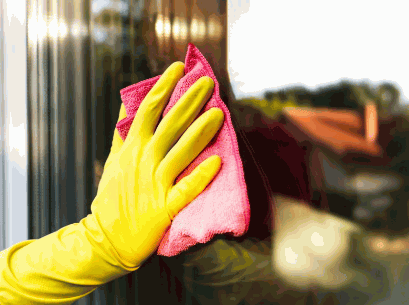
Step 2: Prepare The Cleaning Solution Using DIY And Natural Cleaning Methods
Preparing the cleaning solution is crucial for achieving a streak-free finish on window glass, whether you opt for a DIY cleaner or commercial options.
Among the various options, many prefer making a vinegar-based cleaning solution, which not only cleans but also disinfects effectively. To create this mixture, simply combine equal parts distilled vinegar and warm water in a spray bottle, providing an economical approach to cleanliness. If they are facing particularly stubborn grime, a soap solution consisting of mild detergent diluted in warm water can be exceptionally beneficial. For a more refreshing alternative, mixing two tablespoons of lemon juice with a litre of water offers both cleaning properties and a pleasant scent.
- Vinegar Mixture: 240 ml distilled vinegar + 240 ml warm water
- Soap Solution: 30 ml mild detergent + 1 litre warm water
- Lemon Juice Cleaner: 30 ml lemon juice + 1 litre water
By using these natural ingredients, not only will they ensure a sparkling clean finish, but they will also embrace eco-friendly choices in their cleaning habits, promoting window care with minimal environmental impact.
Step 3: Apply The Cleaning Solution To The Glass Including Window Tracks
Applying the cleaning solution to the glass is key to achieving a thorough cleaning. Use a spray bottle to evenly distribute your chosen cleaning solution over the window surface, focusing on areas with heavy grime or fingerprints for optimal cleaning.
To ensure the best results, it’s essential to maintain a systematic approach while applying the cleaning solution. Begin by thoroughly shaking the spray bottle to mix the solution, allowing for maximum efficacy. Next, hold the bottle approximately 30 centimetres away from the glass surface. This distance helps in achieving an
- even distribution
- preventing over-saturation
- reducing drips
which can often lead to streaks.
Consider the type of product you are using. High-quality glass cleaners can significantly enhance your results and protect against future smudges. Ensure coverage extends to the edges to avoid any build-up of dirt in commonly neglected areas. Always wipe in a circular motion using a microfibre cloth, which is gentle on the glass yet effective in lifting stubborn residues.
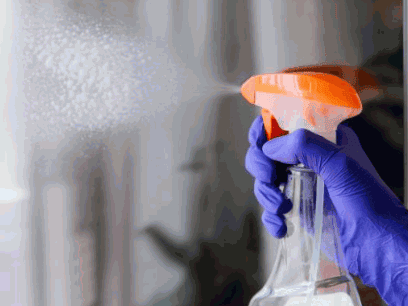
Step 4: Scrub The Glass With A Sponge Or Soft Cloth For Effective Residue Removal
Once the cleaning solution is applied, the next step is to scrub the glass gently with a sponge or soft cloth. Using a microfibre cloth is highly recommended as it effectively lifts dirt without scratching the glass surface. Cleaning windows can be a satisfying task when approached with the right techniques, ensuring a streak-free finish that enhances visibility and aesthetics.
When scraping away grime, it’s essential to maintain gentle pressure and utilise circular motions. This method not only minimises streaks but also ensures comprehensive coverage. To tackle stubborn spots, consider soaking a corner of your cloth in the cleaning solution and allowing it to rest on the blemish for a minute before scrubbing. This extra dwell time helps to break down tough residues, making them easier to remove.
- Utilise a squeegee for larger surfaces to avoid drips and enhance window polishing.
- For tricky areas, a soft-bristled brush can be very effective.
- Always wring out excess liquid from your cleaning cloth to prevent sloppy results.
- Consider using Casabella Microfiber Glass Cloths for an impeccable finish.
Incorporating these techniques will not only simplify the job but also ensure that the glass is left sparkling clean, inviting more natural light into your space.
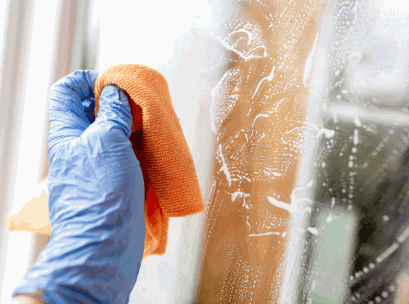
Step 5: Rinse The Glass With Clean Hot Water
Rinsing the glass with clean hot water is vital to ensure all cleaning solution residues are removed and to enhance the effectiveness of fingerprint cleaner.
To achieve a truly spotless finish, it is crucial to follow up your initial cleaning with a thorough rinse. Begin by filling a bucket or bowl with fresh, clean water, ideally using distilled water to prevent any mineral deposits from forming on the surface.
Using a clean sponge or cloth dampened with this water, gently wipe down the windows once more. This method not only helps in eliminating any remaining soap or vinegar residue left after scrubbing but also minimises streaking.
- Avoid rinsing with tap water when possible; minerals can lead to unsightly spots.
- For optimal results, use a soft squeegee after rinsing to remove excess water.
- Ensure the drying cloth is lint-free to prevent any residual fibres from clinging to the glass.
By taking these steps, you ensure a gleaming, streak-free finish that enhances the clarity and brightness of your windows.
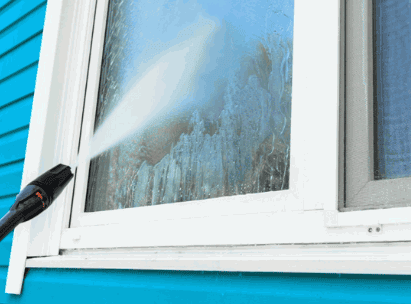
Step 6: Dry The Glass With A Squeegee Or Soft Cloth And Essential Oils
The final step in the cleaning process is to dry the glass using a squeegee or a soft cloth, which is essential for achieving a streak-free finish. Start at the top corner and pull the squeegee downwards in a straight line, wiping the blade with a cloth after each pass to ensure optimal results.
To amplify the effectiveness of drying glass surfaces, consider using essential oils for a pleasant scent and follow a few best practices.
- First, ensure the glass is clean and free from loose debris, as this can lead to unsightly scratches.
- Second, consider using a high-quality squeegee that fits comfortably in your hand. A rubber blade will glide effortlessly and remove water quickly.
- Those using a cloth should opt for microfiber to trap grime and absorb moisture without leaving lint behind.
Work in sections and dry promptly to prevent water spots from forming. By following these guidelines, not only will the windows sparkle, but you'll also avoid common pitfalls that can undermine your hard work.
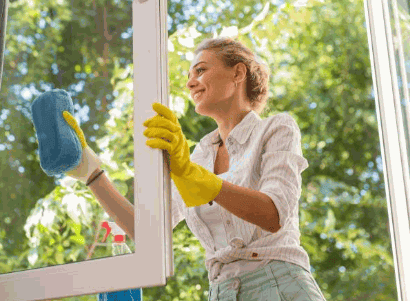
How To Clean Different Types Of Window Glass And Maintain Window Care?
Different types of window glass require tailored cleaning methods to ensure optimal results and maintain their integrity. For instance, tinted glass may need gentler cleaning solutions, while frosted glass can accumulate debris more quickly and require more frequent maintenance.
Understanding the distinct characteristics of each type of glass is essential for effective cleaning practices, as recommended by the Good Housekeeping Institute.
Tinted Glass
Cleaning tinted glass requires special attention to preserve its colour and integrity. Opt for a mild cleaning solution, such as a vinegar mixture, and avoid harsh chemicals that could damage the tint. Always use a soft cloth or sponge to scrub, ensuring you apply gentle pressure to prevent scratches.
Regarding maintaining the clarity and appearance of tinted glass, employing a few key strategies can make all the difference. Users should remember that proper care is essential not only for aesthetic reasons but also to prolong the life of the tinting material.
Here are some best practices, suggested by experts:
- Choose products specifically designed for tinted windows, as they often contain gentle ingredients that won't harm the film.
- Avoid using abrasive cleaners or scrubbers, as these can lead to permanent scratches and reduce the film's effectiveness.
- It is advisable to clean the glass during cooler parts of the day to prevent the cleaning solution from drying too quickly, which can leave streaks.
- Consider applying a protective coating formulated for tinted surfaces after cleaning to help repel dirt and grime.
By following these guidelines, individuals can ensure their tinted glass remains not only beautiful but also functional for years to come.
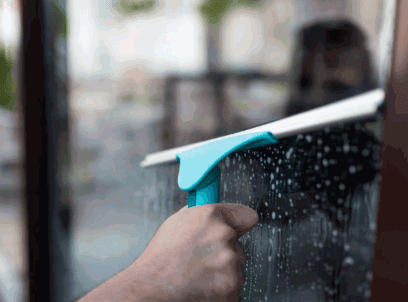
Frosted Glass Cleaning Hacks
Frosted glass can trap more dirt and fingerprints than clear glass, necessitating more frequent cleaning to maintain its appearance. Use a vinegar cleaner for effective residue removal and apply using a soft cloth to ensure a gentle touch that won't scratch the surface.
One of the specific challenges associated with cleaning frosted glass surfaces is their textured finish, which can accumulate grime in uneven pockets, making them difficult to clean thoroughly. To tackle these challenges, consider implementing a few effective strategies:
- Regular Maintenance: Schedule frequent cleanings to prevent major build-up.
- Use the Right Tools: A microfiber cloth or sponge works better than rough fabrics.
- Opt for a Dual Action Cleanser: Pair vinegar with warm water for additional effectiveness.
By incorporating these tips, one can ensure that frosted glass remains in pristine condition while avoiding issues common in cleaning home appliances.
Stained Glass
Cleaning stained glass requires a delicate approach to avoid damaging the artwork while ensuring cleanliness. Use a soft, damp cloth with a gentle cleaning solution such as distilled water mixed with a bit of mild soap to effectively remove grime without harming the glass.
Stained glass, renowned for its breathtaking artistry, also demands careful consideration during maintenance to preserve its beauty and integrity. It is essential to avoid abrasive cleaners or scrubbing brushes that could scratch the surface. Instead, the use of non-toxic solutions or a DIY cleaner is highly recommended for optimal care.
- Always test any cleaning solution on a small, inconspicuous area before applying it to the entire piece.
- Consider using a solution that specifically mentions its compatibility with stained glass.
- Regular dusting with a soft feather duster can help reduce the build-up of grime, making thorough cleaning easier.
Routine inspections can help spot potential issues such as cracked lead or loose glass, which may require professional attention. By adopting these practices, one can maintain the splendour of stained glass for years to come.
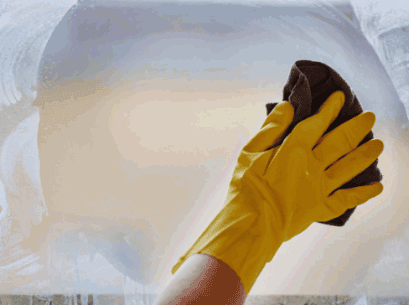
Tempered Glass
Toughened glass is generally more durable than standard glass, but it still requires proper cleaning to maintain its clarity. Using an effective cleaner like a vinegar mixture, scrub gently with a microfibre cloth, such as those found in a Casabella Microfiber Glass Cloths set to avoid scratches, ensuring that no residue remains after cleaning.
To achieve pristine results, consider incorporating the following effective cleaning methods tailored specifically for this resilient material:
- Prepare a solution: Mix equal parts white vinegar and water in a spray bottle for a natural yet potent cleaner that effectively cuts through grime.
- Choose the right tools: Opt for soft sponges or lint-free cloths, as these materials will not leave scratches or lint behind, maintaining that clear and bright appearance.
- Spot test: Always test your cleaning solution on a small, inconspicuous area first to ensure compatibility with the glass surface.
- Dry properly: After cleaning, dry the glass with a squeegee or a clean, dry cloth to prevent streaks and ensure no moisture lingers on the surface.
Incorporating these methods not only enhances the durability of toughened glass but also extends its lifespan, making maintenance a simple yet rewarding task.
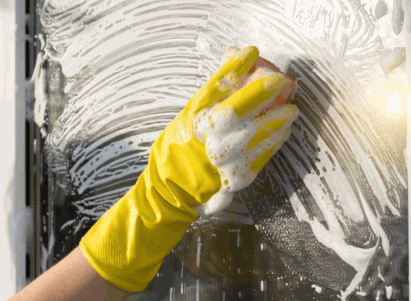
Double-Pane Glass
Cleaning double-glazed glass presents unique challenges due to the sealed nature of the units. It’s essential to clean the exterior surface thoroughly and, if accessible, the interior using a mild cleaning solution like a window cleaner to prevent moisture build-up between the panes.
When dealing with moisture trapped between the layers, it’s crucial to understand that traditional cleaning methods may not suffice. If condensation appears, the integrity of the seal might be compromised, allowing air and moisture to linger.
In such cases, seeking professional intervention is often the best course of action to ensure that the longevity of the window is maintained. Regular maintenance not only enhances the aesthetic appeal of your home but also prevents potential damage down the line. Here are a few strategies:
- Use a vacuum cleaner with a small attachment to remove any dust from the edges.
- Consider desiccants if advised by professionals to absorb moisture.
- In severe cases, window replacement may be necessary.
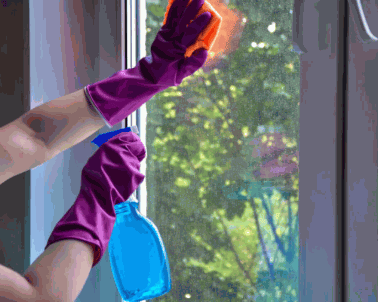
How To Maintain Clean Window Glass?
Maintaining clean window glass involves a combination of regular cleaning and proper care to keep windows in excellent condition. Frequent cleaning helps to prevent the build-up of grime and dirt while using safe cleaning products like homemade vinegar or bicarbonate of soda solutions enhances long-term window maintenance.
Establishing a cleaning schedule ensures windows stay clear all year round.
Regularly Clean Windows
Regularly cleaning windows is essential to preserving their clarity and extending their lifespan. Establishing a cleaning schedule, ideally every month or seasonally helps prevent dirt from accumulating and makes cleaning easier in the long run.
When considering window maintenance, it's important to realise that neglected windows can develop long-term damage, such as etched glass or stubborn stains, which become increasingly difficult and costly to remove.
Incorporating a few straightforward practices into your routine can significantly elevate the overall appearance of your home. Here are some benefits of regular window cleaning:
- Clarity: Clean windows provide a clear view and allow more natural light into your space.
- Longevity: Keeping windows clean helps to extend their lifespan by preventing damage.
- Cost-effectiveness: Regular maintenance reduces the chance of requiring professional services for significant repairs.
Ultimately, by prioritising this simple maintenance task, you facilitate easier future cleanings and enhance the overall aesthetic of your home.
Use Protective Coatings
Using protective coatings on window glass can significantly reduce the accumulation of dirt and grime, making maintenance easier. These coatings can enhance the window's resistance to weather effects and help maintain its clarity, much like using an Invisible Glass Cleaner for longer periods.
Several types of protective coatings are available that cater to different needs and preferences.
- Hydrophobic coatings offer water-repellent properties, causing rainwater to bead up and roll off, taking dirt along with it.
- Low-E glass coatings reflect infrared light, improving energy efficiency while protecting against UV rays that may fade interiors.
- Anti-graffiti coatings make it easier to remove stubborn stains and graffiti without damaging the glass.
- Tinted films provide added privacy and can reduce glare, making indoor spaces more comfortable.
By incorporating these specialised coatings, property owners can not only preserve the aesthetic appeal of their windows but also minimise the frequency of cleaning, saving both time and effort.
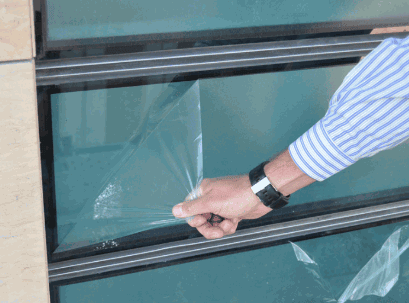
Clean Windows In The Correct Order
Cleaning windows in the correct order is essential for achieving optimal results without missing any spots. Start with the exterior sides of the windows, then proceed to the interior, ensuring a systematic approach that maximises cleaning efficiency.
To maintain clarity and shine, it’s crucial to use the right tools and products. First, gather all necessary supplies including a glass cleaner, microfibre cloths, a squeegee, and a bucket of warm, soapy water. This preparation not only saves time but also enhances the final outcome.
- Begin by removing dust and debris from the window frame and sill.
- Next, apply the cleaner in a zig-zag pattern to ensure even distribution.
- Use the squeegee from top to bottom, wiping the blade with a clean cloth after each pass.
By adhering to this sequence, individuals can achieve streak-free and spotless windows while minimising the risk of having to redo any sections.
Avoid Harsh Chemicals
Avoiding harsh chemicals when cleaning windows is crucial for both your health and the longevity of your windows. Opt instead for safe cleaning solutions, such as vinegar, bicarbonate of soda, or commercially available products free from harmful substances.
Using natural cleaning products not only protects the environment but also ensures that your living space remains free from toxic residues. Many people overlook the potential harm that traditional cleaners can cause, not just to the surfaces they treat, but also to the quality of indoor air. Embracing alternative cleaning options can significantly reduce exposure to allergens and irritants.
- Consider mixing equal parts of water and vinegar for an effective non-toxic cleaner, as recommended by the Good Housekeeping Institute.
- Bicarbonate of soda acts as a gentle abrasive, perfect for removing stubborn stains.
- Look for eco-friendly brands that prioritise sustainability in their formulas, such as Invisible Glass Cleaner.
By making these small changes in cleaning habits, one can ensure that both the windows and health are well cared for.
Inspect For Any Damage
Regularly inspecting windows for any signs of damage, perhaps consulting experts like Cloudy2Clear for guidance, is essential for effective maintenance and prevention of future issues. Look for cracks, chips, or any leaks in the seals, as these can affect both the performance and appearance of the windows.
When undertaking this critical task, homeowners should keep an eye out for several key indicators that can signal underlying problems. Areas to check include:
- Physical Damage: Look closely for any visible cracks or chips that could lead to further deterioration.
- Seal Integrity: Ensure that the seals around windows are intact, as compromised seals can lead to draughts and energy loss.
- Moisture Accumulation: Regularly inspect for condensation between panes, as this can indicate a seal failure.
- Operating Mechanism: Verify that windows open and close smoothly without any sticking or resistance.
Addressing these issues promptly not only enhances the durability of windows but also improves energy efficiency. Consider simple cleaning tips, such as using a soft cloth and gentle window cleaner, to maintain both their clarity and functionality.
